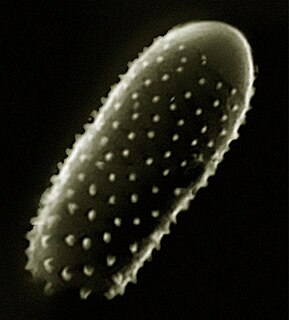 W
WBurrknot is a tree disorder caused by the formation of adventitious root primordia. Although previously classified as disease, is now classified as a disorder, as it is no longer believed to be pathogenic.
 W
WHypoxylon canker of shade trees is a weak ascomycete fungus that negatively affects growth and can eventually lead to the death of already dying or diseased host trees (3). There are many different species that affect different trees. For example, Hypoxylon atropunctatum, a common species, is found on oak trees, Hypoxylon tinctor affects sycamore trees, and Hypoxylon mammatum infests aspen trees (2,3,16). Although the fungus is found on the majority of tree bark in an infested area, it only harms the tree when the tree becomes stressed or injured because it is easier to infect (2). Thus, Hypoxylon had an endophytic stage. An endophyte is a bacterium or fungus that spends some of its life not causing disease to the host while being on it (12). When a stress or injury occurs, the fungus will infect and begin living off the nutrients of the tree. Hypoxylon infects trees throughout the United States, but a few notable wide-scale problems have occurred in Arkansas, North Texas, Oklahoma, and the Mountain West (2,3,5,16). Hypoxylon canker of shade trees is a secondary disease: a primary factor, such as drought or physical damage, usually causes the dying and decaying of the tree first before the Hypoxylon canker pathogen infects (4). This will cause the tree to be in stress and potentially start to decay. The pathogen infects the living tree while it is in stress; it will not infect a tree that is healthy or already dead (3). In order for a tree to become infected, the tree must be already dying or at least has branches that are dying. The pathogen will therefore kill the tree if the tree is unhealthy.
 W
WMelampsora is a genus of Basidiomycota fungi. Melampsora species are plant pathogens.
 W
WPhytophthora alni is an oomycete plant pathogen that causes lethal root and collar rot in alders. It is widespread across Europe and has recently been found in North America. This species is believed to have originated relatively recently.
 W
WPhytophthora kernoviae is a plant pathogen that mainly infects European beech and Rhododendron ponticum. It was first identified in 2003 in Cornwall, UK when scientists were surveying for the presence of Phytophthora ramorum. This made it the third new Phytophthora species to be found in the UK in a decade. It was named Phytophthora kernoviae, after the ancient name for Cornwall, Kernow. It causes large stem lesions on beech and necrosis of stems and leaves of Rhododendron ponticum. It is self-fertile. It has also been isolated from Quercus robur and Liriodendron tulipifera. The original paper describing the species, stated it can infect Magnolia and Camellia species, Pieris formosa, Gevuina avellana, Michelia doltsopa and Quercus ilex. Since then many other plants have been identified as natural hosts of the pathogen. Molecular analysis has revealed that an infection on Pinus radiata, recorded in New Zealand in 1950, was caused by P. kernoviae.
 W
WPhytophthora ramorum is the oomycete plant pathogen known to cause the disease sudden oak death (SOD). The disease kills oak and other species of trees and has had devastating effects on the oak populations in California and Oregon, as well as being present in Europe. Symptoms include bleeding cankers on the tree's trunk and dieback of the foliage, in many cases leading to the death of the tree.
 W
WPine-pine gall rust, also known as western gall rust, is a fungal disease of pine trees. It is caused by Endocronartium harknessii, an autoecious, endocyclic, rust fungus that grows in the vascular cambium of the host. The disease is found on pine trees with two or three needles, such as ponderosa pine, jack pine and scots pine. It is very similar to pine-oak gall rust, but its second host is another Pinus species. The fungal infection results in gall formation on branches or trunks of infected hosts. Gall formation is typically not detrimental to old trees, but has been known to kill younger, less stable saplings. Galls can vary from small growths on branch extremities to grapefruit-sized galls on trunks.
 W
WPhytophthora ramorum is the oomycete plant pathogen known to cause the disease sudden oak death (SOD). The disease kills oak and other species of trees and has had devastating effects on the oak populations in California and Oregon, as well as being present in Europe. Symptoms include bleeding cankers on the tree's trunk and dieback of the foliage, in many cases leading to the death of the tree.
 W
WYellow-cedar decline is the accelerated decline and mortality of yellow cedar occurring in the Pacific Northwest Temperate Rainforest of Southeast Alaska and British Columbia in North America. This phenomenon has been observed on over 200,000 hectares of forest and is believed to be due to reduced winter snowpacks and increased soil freezing.